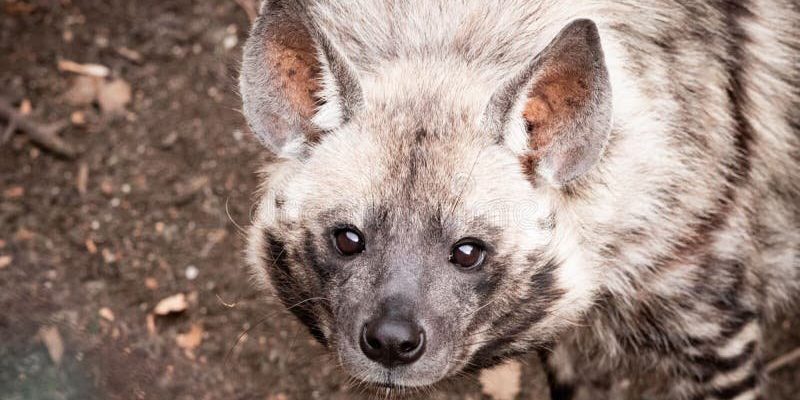
In this article, we’ll dive into what makes the striped hyena a vital player in their environment. You might be surprised to learn how their habits influence everything from prey population dynamics to the health of their habitats. So, grab a cup of coffee, and let’s explore the life of the striped hyena and its essential role in the ecosystem.
What Is a Striped Hyena?
The striped hyena (*Hyaena hyaena*) is a unique species found primarily in North and East Africa, the Middle East, and parts of Central Asia. They’re known for their distinctive stripes and shaggy fur, which can be a mix of grey and brown. Standing about 24 to 30 inches tall at the shoulder, they’re lean yet sturdy, built for the tough environments they inhabit.
These hyenas are generally more solitary than their spotted cousins and prefer to live in smaller family groups. Unlike the more famous spotted hyena, which is known for its loud calls, the striped hyena communicates through a series of grunts and growls that can sound quite eerie in the quiet wilderness. You might be wondering why these characteristics matter; they help them adapt to their environments and enhance their survival as scavengers.
Striped Hyenas: Nature’s Scavengers
Scavengers often get a bad rap, right? But here’s the thing: they play a crucial role in maintaining the balance of ecosystems. Striped hyenas thrive on carrion, which means they primarily eat the remains of dead animals. By consuming these carcasses, they help prevent the spread of disease and promote decomposition.
Think of them as nature’s recyclers. When they eat carrion, they’re cleaning up the environment, making way for healthier ecosystems. Without scavengers like the striped hyena, dead animals would accumulate, leading to severe hygiene issues in the wild. This process not only benefits the hyenas but also supports a host of other animals and plants.
The Impact on Prey Populations
You might be surprised to learn that striped hyenas also help regulate prey populations. When they feast on dead animals, they indirectly control the size of herbivore populations. When a herd of gazelles or antelope is too large, they can overgraze vegetation. This leads to habitat degradation, impacting not only the plant life but also the animals that rely on those plants for survival.
By scavenging on carcasses and reducing the number of potential prey, striped hyenas help maintain a balance in the ecosystem. It’s a fine line they walk, but it’s essential for keeping their environment healthy. They help ensure that herbivore populations remain at sustainable levels, allowing vegetation to thrive and supporting a diverse range of wildlife.
Symbiotic Relationships
Striped hyenas aren’t just lone wolves (or hyenas, in this case). They often interact with other species in their habitats, forming symbiotic relationships that benefit everyone involved. For example, their presence can attract birds like vultures, who are also scavengers. While the hyenas have the strength to open carcasses, vultures swoop in to clean up any leftovers.
This relationship creates a community effort in waste management. They both work together, ensuring that the carcass is consumed efficiently. When you think about it, it’s a perfect example of collaboration in nature. Striped hyenas may also create dens in burrows made by other animals, further showcasing how interconnected these species are.
Conservation Status and Threats
Despite their ecological importance, striped hyenas face several threats. Habitat loss due to urbanization and agricultural expansion is a significant concern. As humans encroach on wild areas, these hyenas find it increasingly challenging to locate food and establish territories. Additionally, poaching and persecution often result from misunderstandings about their role in the ecosystem.
Conservation efforts are vital to ensure the survival of striped hyenas and, by extension, the health of their ecosystems. Programs aimed at educating local populations about the importance of these animals can help reduce conflicts and promote coexistence. Honestly, supporting biodiversity means recognizing the value of every creature, even the lesser-known ones like the striped hyena.
The Role of Hyenas in Cultural Perception
Culturally, hyenas often receive a bad reputation, appearing in folklore as greedy or treacherous creatures. This perception can lead to fear and misunderstanding, further complicating their conservation. By shifting the narrative and highlighting their contributions, we can foster a greater appreciation for striped hyenas.
Here’s the thing: education is a powerful tool. When people learn about the ecological roles of striped hyenas, they may start to see these animals in a new light. It’s not just about preserving a species; it’s about acknowledging how every part of the ecosystem—big or small—plays a role in maintaining balance.
The striped hyena might not be the most glamorous creature in the animal kingdom, but their role in the ecosystem is undeniably vital. From scavenging and controlling prey populations to forming symbiotic relationships, these hyenas help keep the environment balanced. As we acknowledge their contributions, we pave the way for a healthier ecosystem and a deeper understanding of wildlife.
As you sip your coffee, think about the striped hyena next time you hear a howl in the wild. These remarkable animals are more than just scavengers—they are essential players in the grand play of life. Recognizing their importance can lead to a more harmonious coexistence in our shared environment.

